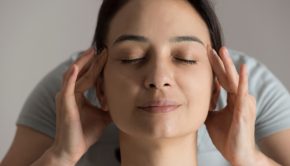Complications of Peripheral and Diabetic Neuropathy
Chronic nerve pain, or peripheral neuropathy, is a serious warning sign of disease. It can be caused by toxins that range from organic herbicides to industrial and environmental agents that include heavy metals and pharmaceuticals. An estimated 30 to 40 percent of people that undergo chemotherapy develop peripheral neuropathy, and it is a leading reason why people with cancer stop treatment early.
The symptoms of peripheral neuropathy are highly variable. A thorough neurological examination helps identify nerve demyelination, and through bioresonance testing, the presence of toxic and pernicious agents. Evaluation of the patient’s ability to sense vibration, light touch, body position, temperature and pain reveals any sensory nerve damage and may indicate whether small or large sensory nerve fibers are affected.
More commonly, diabetes mellitus, which is characterized by chronically high blood glucose levels, is a leading cause of disease in the U.S. Endocrine disorders that lead to hormonal imbalances can also disturb normal metabolic processes and cause neuropathies. For example, an underproduction of thyroid hormones slows metabolism, leading to fluid retention and swollen tissues that can exert pressure on peripheral nerves.
Infections can cause peripheral neuropathy. Viruses and bacteria that can attack nerve tissues include Herpes varicellazoster (shingles), Epstein-Barr virus, West Nile virus, cytomegalovirus, and human Herpes simplex viruses. These viruses can severely damage sensory nerves, causing attacks of sharp, lightning-like pain. Tick-borne infections such as Lyme involve a wide range of neuropathic disorders, including a rapidly developing, painful polyneuropathy, often within a few weeks of being infected. West Nile virus is spread by mosquitoes and is associated with a severe motor neuropathy. The inflammation triggered by infection sometimes results in different forms of inflammatory neuropathies that may develop quickly or slowly.
The first step in treating peripheral neuropathy is to address any contributing causes, such as infection, toxin exposure, medication-related toxicity, vitamin deficiencies, hormonal deficiencies, autoimmune disorders or compression, that can lead to neuropathy. In the clinic, this can be done using combination of laboratory tests and clinical diagnostics. Because peripheral nerves have the ability to regenerate axons as long as the nerve cell itself has not died, rehabilitation can lead to functional recovery over time. Corrective treatments help resolve not just the pins and needles and pain, but also the sensory signaling and input to the brain, vascular and organ systems. Correcting an underlying condition often can result in the neuropathy resolving on its own as the nerves recover or regenerate and metabolism improves.
The adoption of healthy lifestyle habits such as maintaining optimal weight, avoiding exposure to toxins, exercising, eating a balanced diet, correcting vitamin deficiencies and limiting or avoiding alcohol consumption can reduce the effects of peripheral neuropathy. Exercise can reduce cramps, improve muscle strength and prevent muscle wasting. Dietary strategies can improve gastrointestinal symptoms. Timely treatment of injuries can even help prevent permanent damage.
 Dr. Doug Pucci, DC, DPSc, FAAIM, provides nutrition, homeopathy, comprehensive testing for health biomarkers, brain and body care and offers in-office seminars on neurotoxic illness, hormone imbalances and chronic disease. For more information, call 201-261-5430 or visit GetWell-Now.com.
Dr. Doug Pucci, DC, DPSc, FAAIM, provides nutrition, homeopathy, comprehensive testing for health biomarkers, brain and body care and offers in-office seminars on neurotoxic illness, hormone imbalances and chronic disease. For more information, call 201-261-5430 or visit GetWell-Now.com.





























